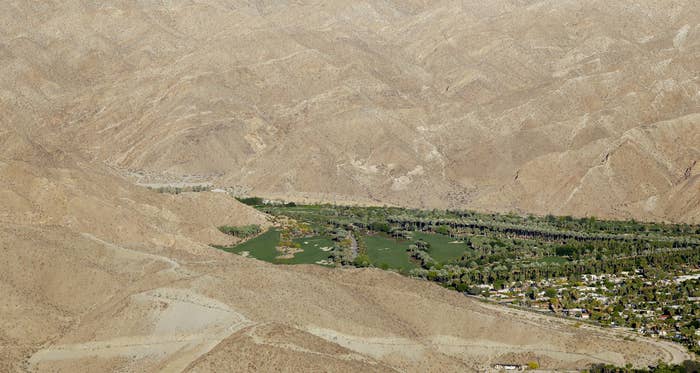Sci-fi icon William Shatner said last week he's got a fix to the massive drought facing California: an above-ground pipeline from somewhere in the Northwest.
Shatner spoke about his idea to Yahoo Tech's David Pogue.
"It's simple," he said. "They did it in Alaska," referring to the oil pipeline.
Shatner told Yahoo he'd be starting a $30 billion campaign on Kickstarter for the project. He said he hoped to use the campaign to highlight how California needs to think about tackling the drought issue with something other than just "cutting back."
"So why not a pipeline?" Shatner said.
As of Tuesday, a spokesperson for Kickstarter said Shatner had not yet launched a drought-related campaign — though he could at any time, if the project met Kickstarter's rules.

But it's not the first time someone has considered piping in water from wetter regions to the north.
A 1986 editorial in Maine's Bangor Daily News heralded the lasting impact a national pipeline could have, comparing it to building a highway.
And former Alaska Gov. Wally Hickel suggested selling water to Southern California in the late '80s. Engineering company Fluor took a look at the feasibility of the idea in 1991, and told L.A. County officials it would cost $110 billion.
In 1975, the U.S. Department of the Interior's Bureau of Reclamation considered an undersea pipeline from northern to southern California — also a costly project with even more logistical hurdles.
Ultimately, a 1992 review by the federal Office of Technology Assessment found a pipeline to be an unlikely solution to California's water troubles.
"Even the more expensive supply options, such as large-scale desalination, appear to be less expensive than importing water from Alaska — and a virtually unlimited supply of ocean water is available for desalination," the report said.
In 2010, researchers from the Jet Propulsion Laboratory said an ocean pipeline from the Columbia River, which borders Washington and Oregon, to Northern California would be technically possible using more modern materials than previous plans. They estimated the cost of construction alone at $140 billion.
In general, pipelines and other projects, such as dams and desalination plants, are very costly, as well as being damaging to the environment, said Kimiko Martinez of the Natural Resources Defense Council.
A recent report by the environmental advocacy group focused on ways California could manage its water supply long term — without depending on imported water.
"In fact, we found that California could be saving up to 14 million acre-feet of untapped water – providing more than the amount of water used in all of California's cities in one year – with an aggressive statewide effort to use water-saving practices, reuse water, and capture lost stormwater," Martinez said.
Creating a more sustainable California water system should start with more efficiency from farmers, Martinez added. Residents in the suburbs and cities can do their part by replacing lawns — most urban water use goes to landscaping.
"We're using precious drinking water to feed our thirsty lawns, which isn't suited for much of California's landscape — particularly in Southern California. So ripping out lawns and replacing them with native plants and drought-resistant landscapes could have huge benefits," Martinez said. "Also, agriculture uses 80% of California's water, so increasing efficiency in that sector could amount to some huge, huge savings."
So far, the pipeline idea hasn't been embraced by Seattle, which is facing lower snowpacks than normal itself.
Dearest Citizens of Seattle if you think I'm an idiot or evil enough to steal your much needed water; you don't know me very well.
"Much of the state is under a drought declaration and as much as we'd like to help our neighbors in California, I think Washingtonians would want to first make sure we have enough water before sending any south through the Shatner Pipeline," a staff member for Washington's governor told King 5.
But Shatner said he has gotten positive feedback from another city in the Northwest.
I did hear from Grays Harbor, WA who claim the get 3xs the rain fall Seattle gets and they offered their water but we shall see.
For now, he's calling on help from other great minds.
I know I need experts and @algore and @elonmusk should be asked to weigh in and join the conversation.
Former Vice President Al Gore and Elon Musk — tech entrepreneur and founder of SpaceX — have not yet publicly responded.
The Natural Resources Defense Council is an environmental nonprofit organization. A previous version of this story misstated the group's name.
